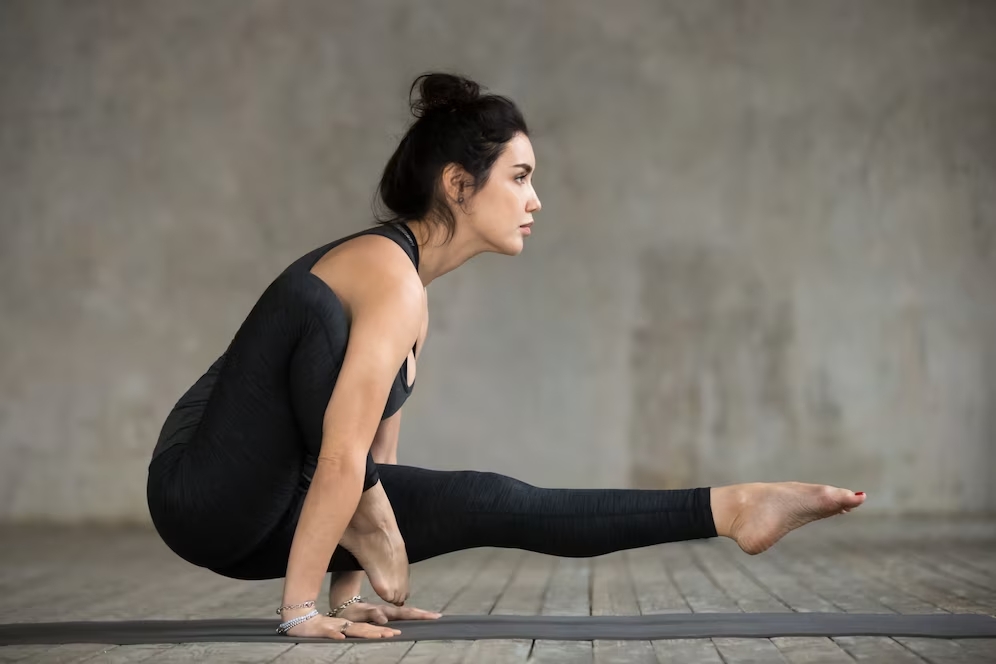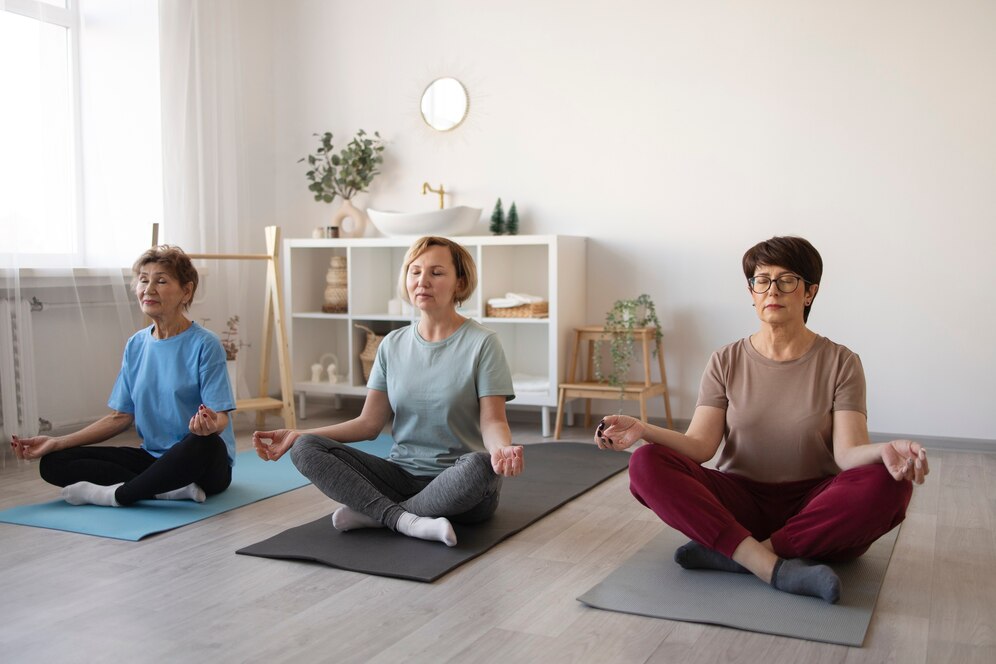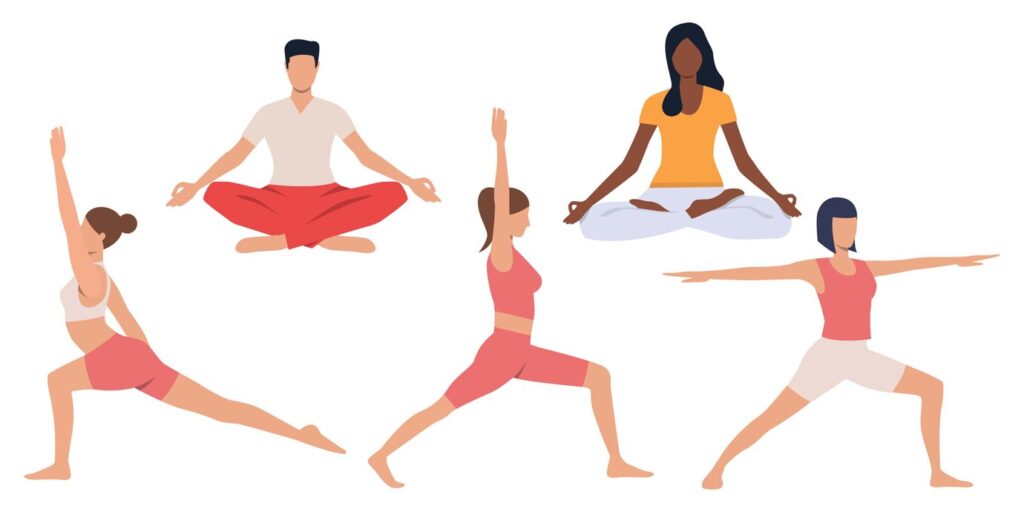Welcome to the world of yoga, where you’ll embark on a journey of self-discovery and holistic well-being. If you’re new to yoga, it’s essential to start with beginner-friendly poses that provide both physical and mental benefits. In this article, we’ll explore ten easy and gentle yoga poses for beginners, along with step-by-step instructions and the health benefits associated with each pose.
Getting Started with Yoga
Before we dive into the poses, let’s understand why yoga is so highly regarded for beginners. Yoga is not just a physical exercise; it’s a practice that harmonizes the mind, body, and spirit. It enhances flexibility, builds strength, improves posture, and promotes relaxation and stress relief. Now that you know the many benefits, let’s explore the first step in your yoga journey.
Choosing the Right Yoga Mat
First things first: you’ll need a good yoga mat. A proper yoga mat provides cushioning, support, and stability during your practice. Opt for a non-slip mat with adequate thickness to protect your knees and joints. With the right mat under your feet, you’ll be ready to explore the essential yoga poses for beginners.
Breathing Techniques
Before we delve into the poses, let’s touch on an integral aspect of yoga – breath control. Proper breathing is the foundation of every yoga practice. Focus on deep, mindful breathing to enhance your practice’s effectiveness. Inhale through your nose, filling your lungs, and exhale slowly through your mouth, releasing tension.
10 Yoga Poses for Beginners:
1. Mountain Pose (Tadasana)
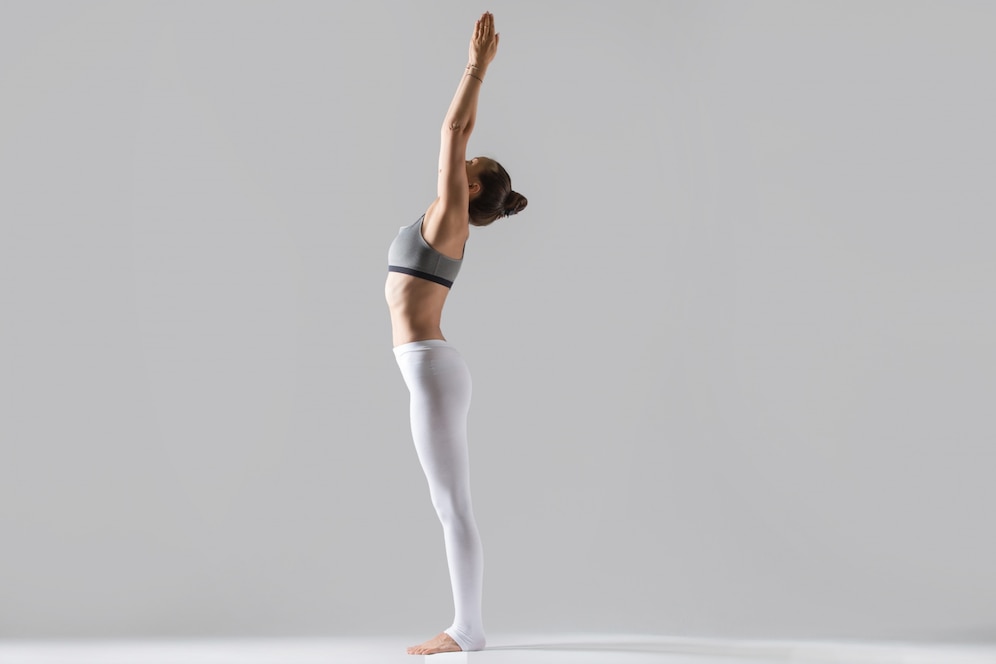
Instructions:
- Stand with your feet together, toes touching, and arms relaxed at your sides.
- Engage your leg muscles, lengthen your spine, and draw your shoulder blades down.
- Gently tuck your chin and gaze ahead. Imagine yourself as a tall, strong mountain.
Health Benefits:
- Improves posture and body awareness.
- Enhances balance and stability.
- Reduces stress and anxiety by promoting mindfulness.
Mountain Pose is the foundation of all standing yoga poses. It’s an ideal starting point for beginners, as it cultivates awareness of your body’s alignment and encourages better posture.
2. Downward-Facing Dog (Adho Mukha Svanasana)
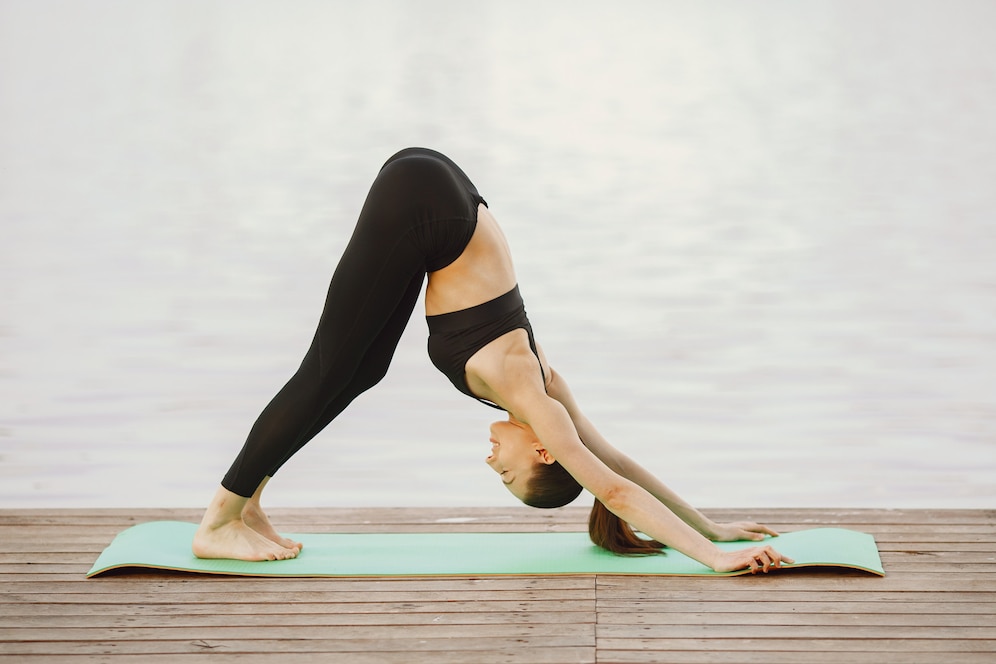
Instructions:
- Start on your hands and knees, aligning your wrists under your shoulders and knees under your hips.
- Curl your toes under and lift your hips toward the ceiling, forming an inverted “V” shape.
- Keep your hands shoulder-width apart, fingers spread, and press your heels toward the floor.
Health Benefits:
- Stretches and strengthens the entire body.
- Increases flexibility in the shoulders, hamstrings, and calves.
- Relieves stress and fatigue while energizing the body.
Downward-Facing Dog is a rejuvenating pose that offers a deep stretch and helps build strength in the upper body, making it a valuable addition to your beginner’s yoga routine.
3. Child’s Pose (Balasana)
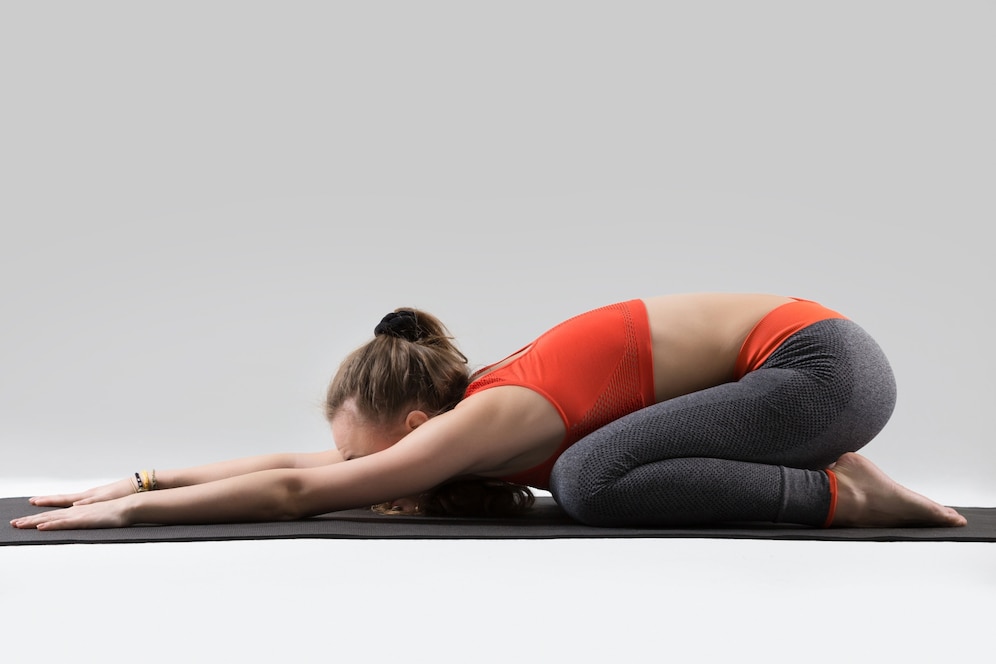
Instructions:
- Kneel on the floor with your big toes touching and knees spread apart.
- Sit back on your heels and stretch your arms forward, lowering your torso toward the ground.
- Rest your forehead on the mat and relax your shoulders.
Health Benefits:
- Promotes relaxation and stress relief.
- Gently stretches the back, hips, and thighs.
- Calms the mind and soothes the nervous system.
Child’s Pose is your go-to for moments of rest and relaxation during your practice. It’s a soothing posture that allows you to recharge and find tranquility.
4. Cobra Pose (Bhujangasana)
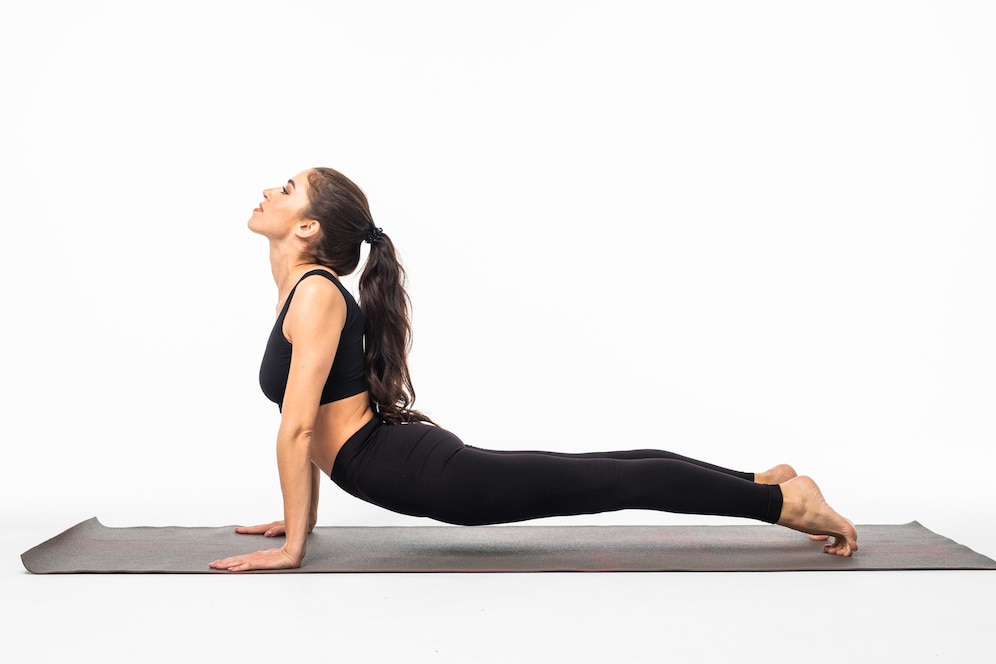
Instructions:
- Lie on your stomach with your legs extended, tops of your feet on the mat.
- Place your hands under your shoulders, fingers pointing forward.
- Inhale, press through your hands, and lift your chest off the ground. Keep your pelvis on the floor.
Health Benefits:
- Strengthens the lower back, buttocks, and arms.
- Opens up the chest and improves lung capacity.
- Enhances posture and alleviates back pain.
Cobra Pose is an excellent choice for beginners seeking to build strength in the lower back and improve overall posture. It’s also a valuable pose for relieving tension in the chest and shoulders.
5. Warrior II Pose (Virabhadrasana II)
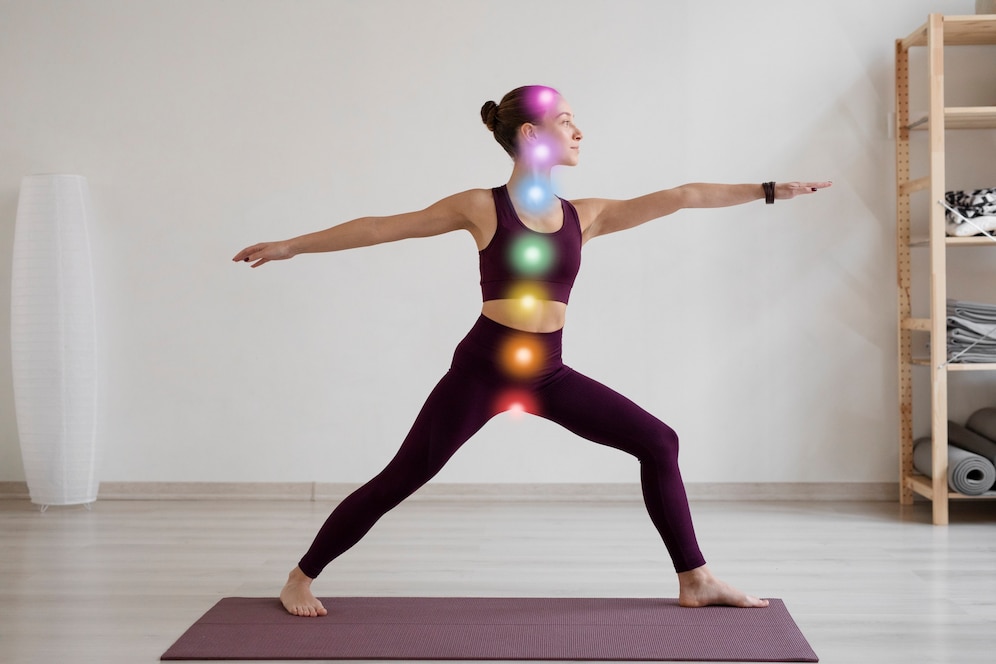
Instructions:
- Begin with your feet wide apart, toes pointing forward.
- Extend your arms out to the sides, parallel to the ground.
- Turn your right foot 90 degrees to the right and bend your right knee, aligning it with your ankle.
- Gaze over your right hand while keeping your torso facing forward.
Health Benefits:
- Builds strength in the legs and arms.
- Enhances balance, stability, and concentration.
- Encourages deep breathing, reducing stress and anxiety.
Warrior II Pose empowers beginners to channel their inner warrior. It’s an excellent pose for strengthening the lower body and fostering mental focus.
6. Bridge Pose (Setu Bandhasana)
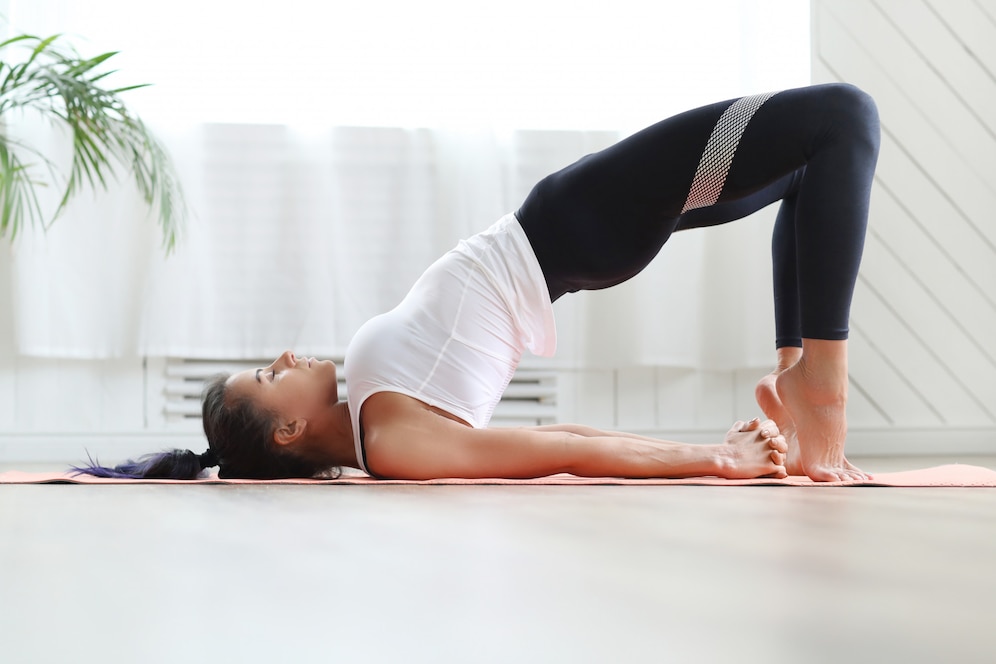
Instructions:
- Lie on your back with your knees bent and feet hip-width apart, flat on the mat.
- Place your arms at your sides, palms facing down.
- Inhale, press through your feet and arms, and lift your hips toward the ceiling.
Health Benefits:
- Tones the back, glutes, and hamstrings.
- Alleviates backaches and discomfort.
- Increases flexibility in the spine and hip region.
Bridge Pose is a beginner-friendly yoga pose that targets the core, hips, and lower back. It’s an effective way to build strength and flexibility in these areas.
7. Tree Pose (Vrikshasana)
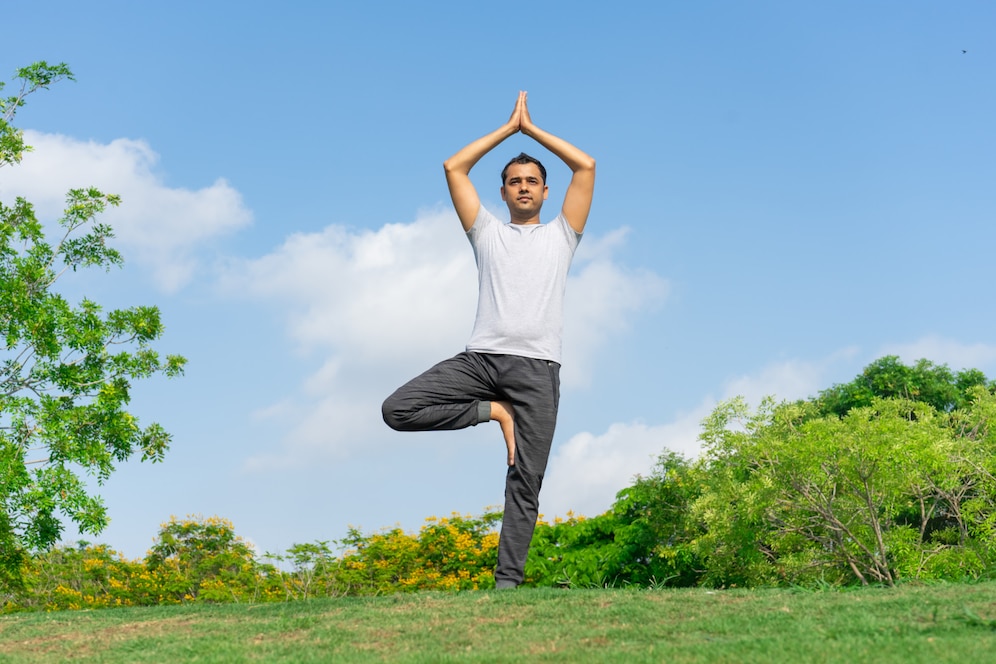
Instructions:
- Stand on one leg with your toes touching the mat.
- Place the sole of your opposite foot against your inner thigh, calf, or ankle.
- Find your balance, engage your core, and bring your hands to your heart in a prayer position.
Health Benefits:
- Enhances balance, concentration, and posture.
- Strengthens the muscles of the standing leg.
- Promotes a sense of grounding and stability.
Tree Pose encourages beginners to cultivate balance and focus. It’s a simple yet effective pose for building stability in both body and mind.
8. Seated Forward Bend (Paschimottanasana)
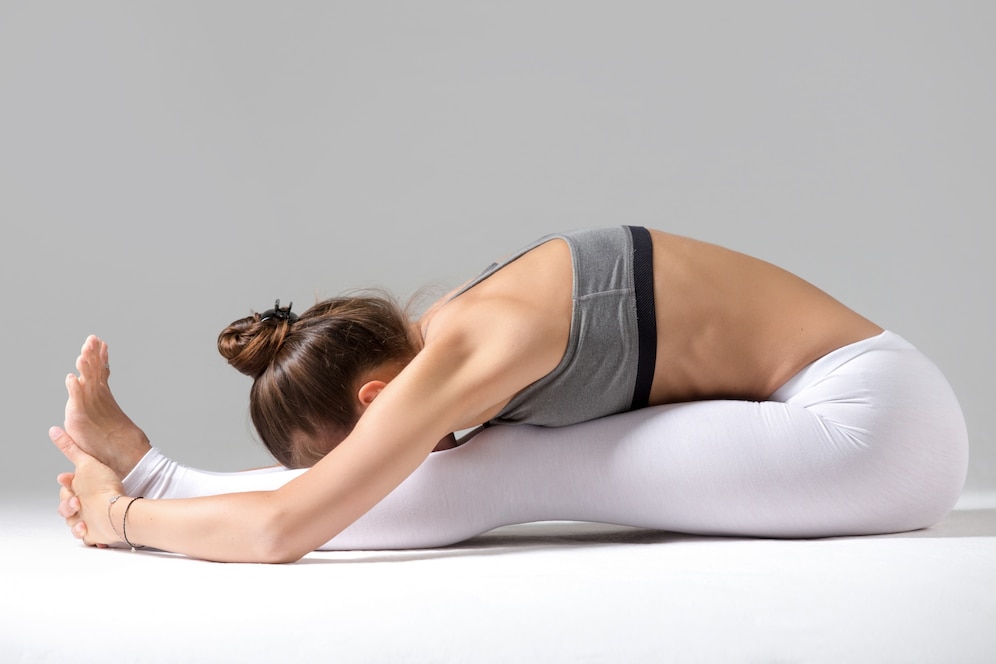
Instructions:
- Sit with your legs extended and toes pointing up.
- Inhale, lengthen your spine, and exhale as you hinge at the hips to reach forward.
- Reach for your toes or shins, keeping your back straight.
Health Benefits:
- Improves flexibility in the spine, hamstrings, and lower back.
- Relieves tension in the neck and shoulders.
- Calms the mind and reduces stress.
Seated Forward Bend is an excellent yoga pose for beginners seeking to improve flexibility in the spine and hamstrings. It’s a gentle stretch that promotes relaxation and mindfulness.
9. Triangle Pose (Trikonasana)
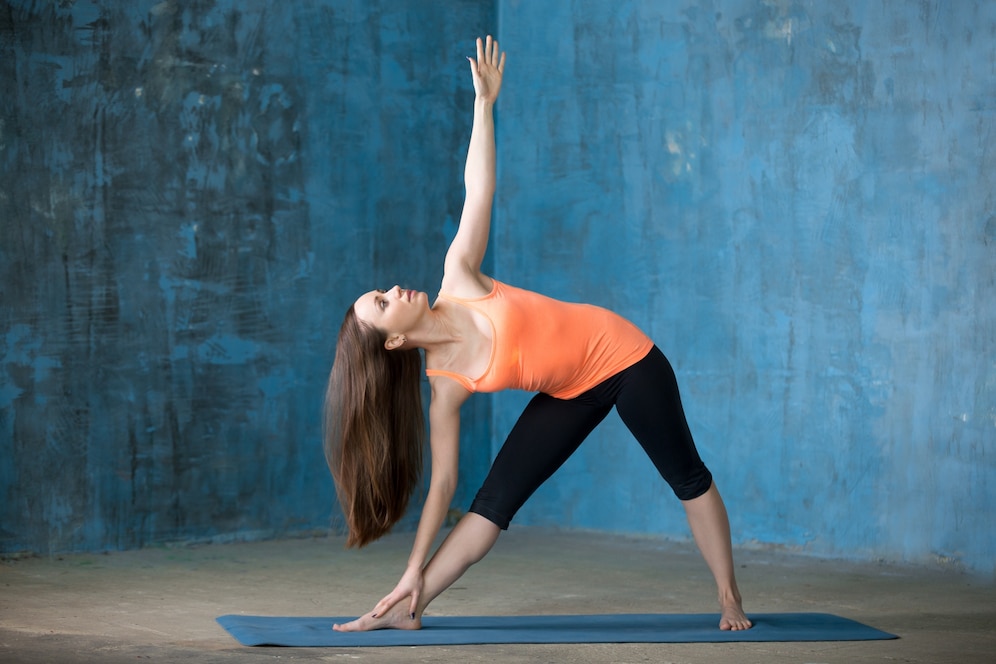
Instructions:
- Stand with your feet wide apart, toes pointing forward.
- Extend your arms out to the sides.
- Shift your hips to the right and reach your right hand down to your shin, ankle, or the floor.
- Gaze up toward your left hand.
Health Benefits:
- Stretches and strengthens the legs and torso.
- Enhances balance, digestion, and flexibility.
- Promotes mental clarity and focus.
Triangle Pose is a valuable addition to a beginner’s yoga routine, as it stretches and strengthens the legs and torso while improving overall balance and concentration.
10. Corpse Pose (Savasana)
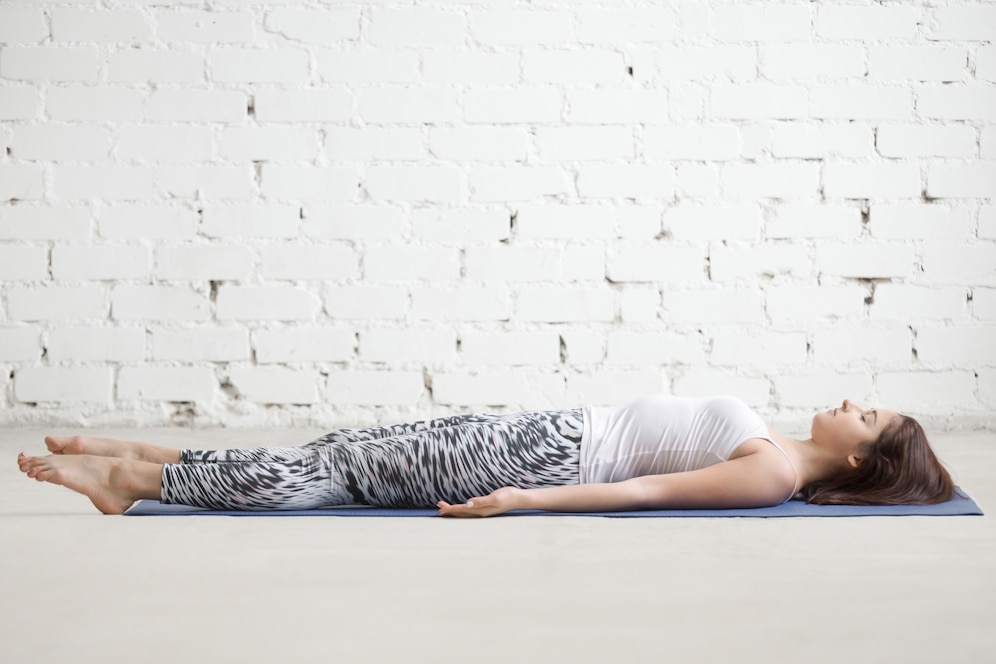
Instructions:
- Lie flat on your back with your legs extended and arms at your sides.
- Close your eyes and relax your entire body.
- Focus on deep, rhythmic breathing, and let go of all tension.
Health Benefits:
- Promotes deep relaxation and integration of the practice.
- Reduces stress and anxiety.
- Enhances overall well-being and mental clarity.
At the end of your practice, it’s essential to relax and rejuvenate with the Corpse Pose. Savasana allows you to fully absorb the benefits of your practice and experience deep relaxation and peace.
Congratulations on taking the first steps into the world of yoga! These ten essential yoga poses for beginners will serve as the foundation of your practice. Remember, yoga is a journey, not a destination. With consistency and dedication, you’ll discover a healthier, more balanced, and peaceful you. So, unroll your mat, take a deep breath, and let the yoga journey begin!
Disclaimer: Always consult with a qualified yoga instructor or healthcare professional before starting any new exercise routine, especially if you have any underlying medical conditions or concerns. The information provided in this article is for educational purposes and general guidance. Practice yoga mindfully and within your physical limits to avoid injury.
FAQs (Frequently Asked Questions)
How often should beginners practice these yoga poses?
Beginners should start with 2-3 sessions per week and gradually increase frequency as they become more comfortable with the poses.
Can I practice yoga if I’m not very flexible?
Absolutely! Yoga is about progress, not perfection. Regular practice will improve flexibility over time.
Are there any safety tips for beginners during yoga practice?
Listen to your body, avoid overstretching, and consult a yoga instructor for guidance if needed.
Can yoga help with stress and anxiety?
Yes, many yoga poses and breathing techniques are effective for reducing stress and anxiety.
How long should I hold each pose during a yoga session?
Aim for 30 seconds to 1 minute for each pose, gradually increasing the duration as you progress in your practice.

David M is a seasoned author renowned for his expertise in health tips and homemade remedies. With a passion for wellness, he diligently researches and meticulously analyzes a plethora of online resources, ensuring their credibility. David’s dedication shines through as he curates invaluable information, catering to health enthusiasts.

